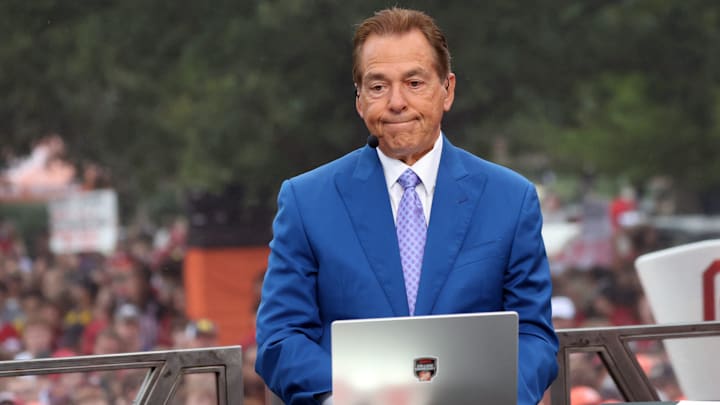When Nick Saban recently addressed the dismissal of Mike Gundy from Oklahoma State, his comments struck at the heart of an evolving landscape in college football. Saban reflected:
"“Some people have a tougher time embracing the whole idea of paying players, especially some of us old timers. It's a little more difficult. Mike Gundy has been a great coach for a long time. Coaching is teaching, and teaching is ability to inspire learning. For those of us who kind of get that and that's been our self-gratification for so many years, embracing paying the players has been a little bit harder, and I think that ultimately is what got them at Oklahoma State.”"Nick Saban
At first blush, it’s not a simple critique of Gundy’s record or scheme. Rather, it’s a broader commentary about resistance to change. Saban’s words underscore how even seasoned, successful coaches may struggle to adapt in an era when Name, Image, and Likeness (NIL) deals rewrite the recruiting rulebook.
Old-Timers vs. New Realities: The Clash Over Paying Players
Saban’s remark—“some of us old timers” having a harder time with student-athlete compensation—reveals a tension many longtime coaches feel. For decades, coaching in college football was underpinned by an ethos of mentorship, teaching, and institutional loyalty. The axiom was: recruit the right players, coach them well, and success follows. Build and develop was the process.
But in today’s NIL-driven era, the calculus has shifted. Recruiting is no longer just about coaching pitch and program prestige; it’s also about the marketplace: which school can offer the most attractive financial avenues for athletes off the field. Coaches once judged primarily on X’s and O’s now find themselves competing in a business-savvy environment they may not have signed up for.
Saban seems to suggest that this shift is not just difficult; it is existential. Some long-tenured coaches may find the pivot from teaching to leveraging commercial partnerships more challenging than embracing a new offensive scheme.
Was NIL Part of Why Saban Retired When He Did?
It’s tempting to read Saban’s comments as a subtle self-evaluation, a retrospective acknowledgment that the game around him changed faster than he could fully embrace it. Could the evolution of NIL have contributed to his decision to step away from Alabama when he did?
Certainly, Saban built his legendary career in a world where recruiting, discipline, and coaching acumen defined success. As the college game morphed into a hybrid of athletics, entertainment, and business, perhaps the energy required to stay at the forefront of every off-field variable became too steep a climb or less personally satisfying for himself to continue coaching the way he was so used to.
While he never publicly attributed his retirement to NIL dynamics, his words today subtly hint at the weight of such pressures. For coaches whose identity is rooted in teaching and mentorship, competing in NIL’s complex terrain might have felt like working in unmapped territory.
Winners and Losers: NIL’s Dual-Edge Sword
NIL has not been universally disruptive in a negative sense. For many programs, it’s been a windfall—an opportunity to attract talent they previously couldn’t, level recruiting disparities, and give student-athletes more agency and reward. The schools that have embraced creative marketing, corporate partnerships, and athlete-brand building have thrived.
But the flip side is real: some programs and coaches have faltered. Saban explicitly links Gundy’s firing to his inferred inability to fully “buy in” to paying players. He also names Dabo Swinney as another high-profile coach who has wrestled with adapting to this new normal.
When a program is built on a traditional philosophy of recruiting elite talent and out-coaching opponents, without leaning heavily into NIL engineering, the shift can feel destabilizing. If the name-brand schools or emerging powerhouses can outspend you in endorsements and NIL bidding, even a consistently successful coach may find his margin for error shrinking. That's why a salary cap should be implemented to keep some restrictions to this. Follow an NFL style free agency and base it off revenue by conferences to set a salary cap for each team within that conference to even the playing field. Just a thought but some change needs to come into play to cap off certain loopholes.
Adapt or Fade: The Next Wave of Coaches
Saban’s remarks carry a warning: in this new era, if you don’t evolve, you risk obsolescence. The next few coaching cycles might well be defined by younger coaches who entered the sport already acclimated to NIL-era expectations. This would mean coaches who see recruiting not just as a roster-building exercise but as a marketing and brand-building operation.
Hiring departments may begin to favor coaches who can not only design compelling offenses or defensive schemes but also who deeply understand social media, personal branding, sponsorship relationships, and athlete monetization.
If Gundy’s firing signals anything, it’s that success in today’s college football demands dual fluencies: X’s and O’s, and deals and image. The old guard can offer experience and institutional knowledge but those unwilling to flex may find themselves outpaced.
Conclusion: A Moment of Reckoning for Coaching Eras
Nick Saban’s candid assessment of Gundy’s exit offers more than critique. His words offer a mirror to coaching evolution and where the game is headed. His invocation of “old timers” and paying players is a recognition that coaching in 2025 looks vastly different than it did twenty years ago.
In many ways, college football is undergoing a reckoning: the power balance is shifting, and the rules of competition are being redrawn off the field as much as on it. Programs and coaches who embrace adaptability, who merge tradition with innovation, may thrive. Others, however, risk being relics in a new age.
If there is one lesson from Saban’s words, it is this: the measure of a great coach today is not just what he teaches—but also what he’s willing to change.
